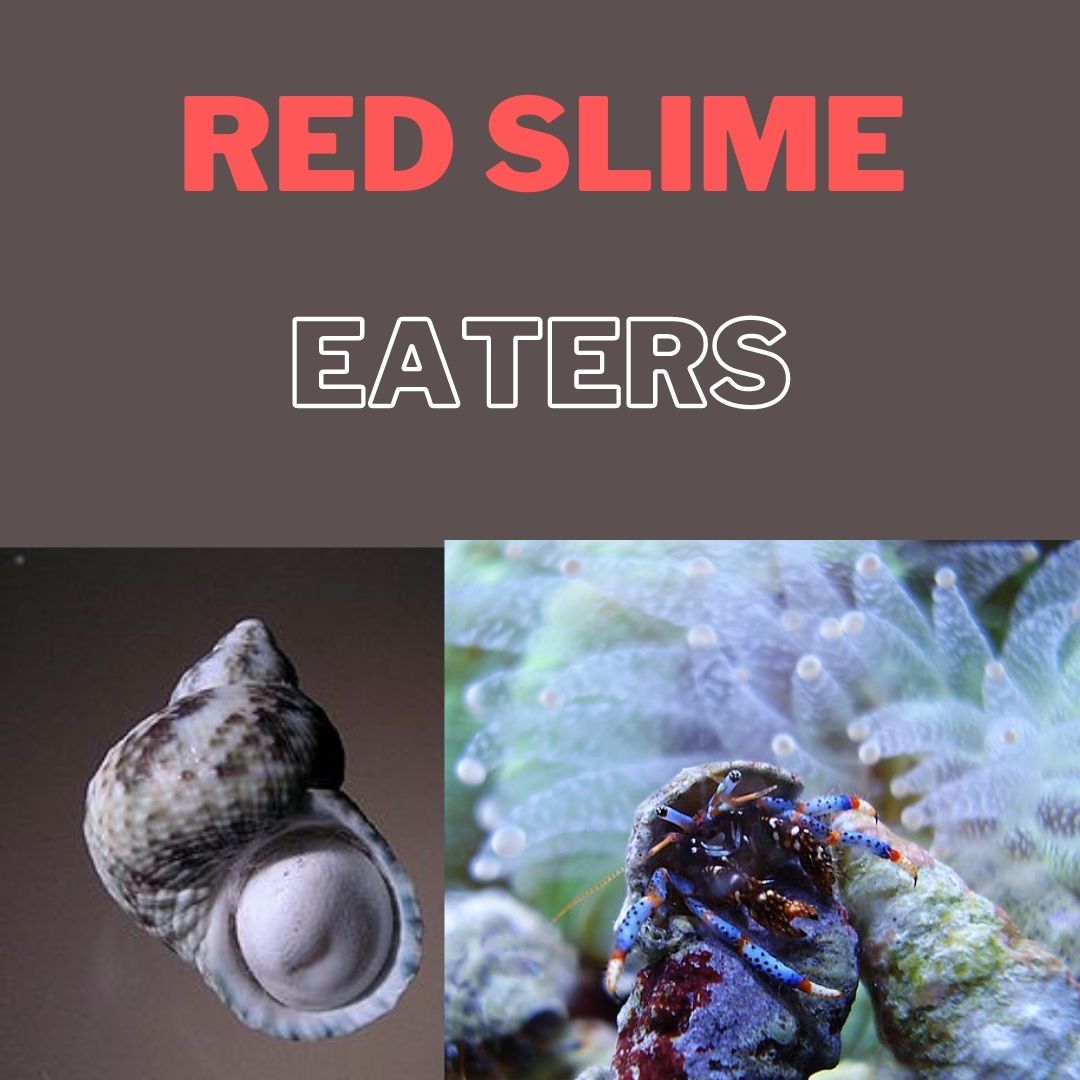
Cyanobacteria is a nuisance in marine aquariums and reef tanks. This red slime algae is actually a bacteria and not an algae at all. If you want a natural way to try to get rid of it, you can use certain clean up crews or natural saltwater inhabitants to do it.
So, what eats Cyanobacteria (red slime algae) in a reef tank? Blue Leg Hermit crabs, Trochus snails, and urchins are the best to eat it. Some other clean up crew inhabitants that will remove cyanobacteria are Cerith snails.
Some things to consider: While there are certain creatures that will consume red slime, you need to fix the cause of the issue first. If you don’t, then it will come back. You also need to consider how bad of an outbreak of cyano do you have. If your live rocks are coated in red slime, and your sand bed looks like a purple mat all over it, you may not be able to get rid of it naturally with a clean up crew.
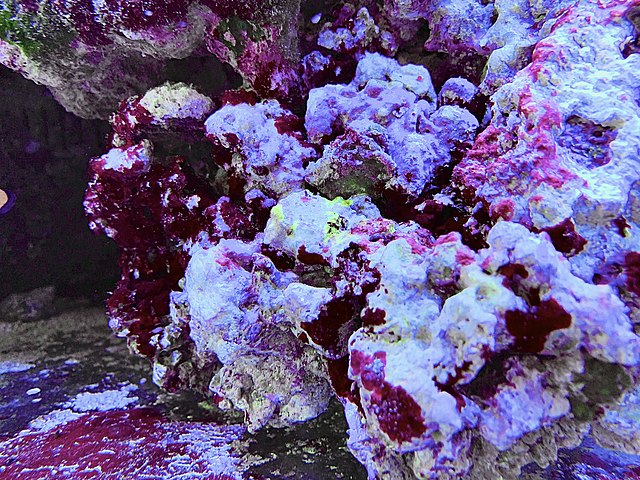
A small clean up crew can be great at eating a small patch here and there. You will need enough snails and crabs to take care of your rocks and sand bed though.
If you have a large outbreak of it, we have an great guide on how to remove red slime algae. After you have taken these steps, it is still a good idea to get some extra clean up crew members that will get rid of red slime. This will help prevent any small patches from getting larger.
Just remember, you need to solve for the cause of the issue or you will get it again.
Table of Contents
List Of Inverts and Fish That Will Eat Red Slime Algae
Here is a list of the best red slime algae eaters. You may need a lot of these depending on the size of your marine aquarium. Adding 4 trochus snails and 3 hermit crabs to a 4 foot tank most covered in red slime will not help that much. You will need a good number of these to eat away at all the slime.
1. Pencil Urchin
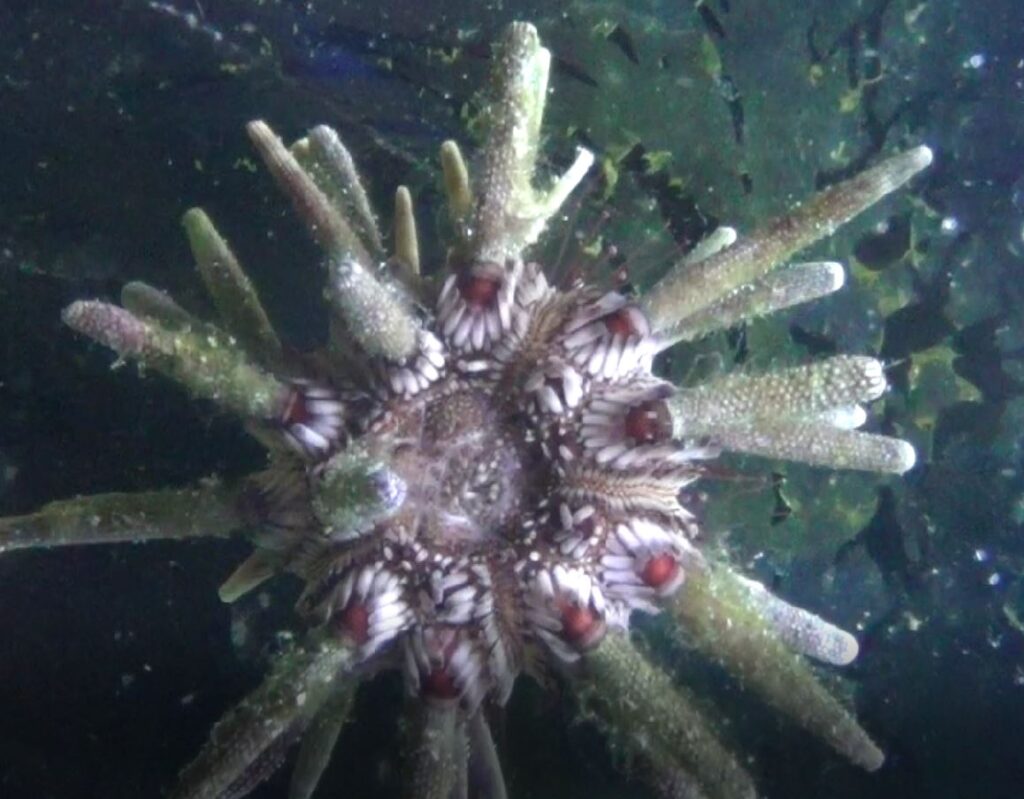
The absolute best invertebrate that will eat red slime algae is a pencil urchin. They will consume it no matter where it is. It can be on your live rocks, glass, or sand bed. They will eat it all if it is in their path.
An urchin will devour almost anything including red slime algae, green algae, and cyano. It is not a picky eater, and if something is in its path, it will eat it. Urchins do a great job of cleaning up all types of algae from your rocks, glass, and sand. I have seen my pencil urchin eat giant patches of red slime.
This red slime algae eater is the best clean up crew for getting rid of cyanobacteria naturally. They are bulldozers that will destroy anything and everything in their path if they can eat it.
The downside to urchins is that they are not reef safe, and given enough time, they will eat some of your corals.
2. Dwarf Blue Leg Hermit Crab
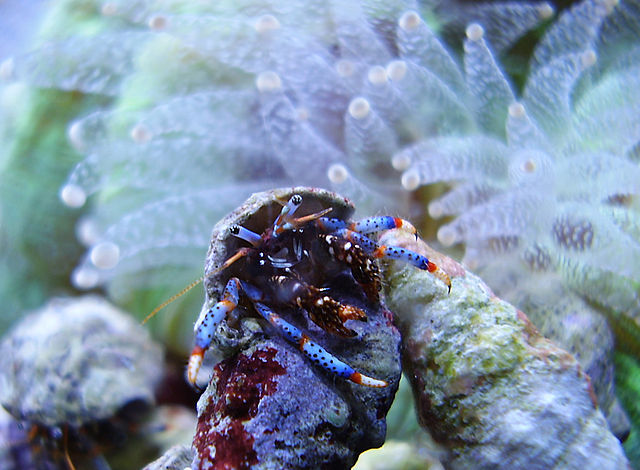
Dwarf Blue Leg Hermit Crab (Clibanarius tricolor) are small crabs that will eat different types of algae including red slime algae. Keep in mind, these do not target red patches like its a food source, but if it is around them, they may eat it. The key word is “may.” Don’t expect to grab a handful of blue leg hermit crabs for cleaning up your marine tank.
These inverts are inexpensive, but they are very small. These are good to keep small patches from forming in dead spots in your tank because they may help eat the algae. They can grow to over 1 inch, but most vendors sell them at very small sizes.
Their small size is an advantage because they can get into small crevices on your live rock to find and eat cyano.
3. Dwarf Red Tip Hermit Crab
The Red Tip Hermit Crab (Clibanarius sp.) is another crab that eats nuisance algae and cyanobacteria. This crab does a better job of sifting through sand in search of food over the Blue Leg. If your problem areas are located more on your rock work, then Dwarf Blue Legs are a better choice. If you have purple mats and red slime on your sand bed, then these red tips will help eat away the algae.
4. Turbo Snails
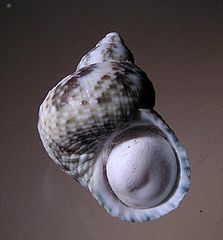
Turbo snails (Turbo sp.) will also eat certain types of red slime algae. These snails will mostly stick to live rocks and glass though. They do not usually eat algae from the sand. In addition to red slime, they also feed on diatoms and other types of algae.
Turbo snails do a great job of removing diatoms, so that is an added plus. These snails are iffy on red slime. You may have some that touch it and others that do not like it.
5. Cerith Snails
Cerith snails (Cerithium sp.) are great scavengers, and they will eat detritus, algae, and red slime (cyanobacteria.)
These snail are similar to the Turbo in that it may eat cyano. Sometimes they do, and sometimes they don’t. If you have had outbreaks in your tank, it is a good idea to add these. These snails do a good job of eating detritus, uneaten food, algae, and waste. These are a great addition overall to your clean up crew.
6. Fighting Conch
Another great invert that will consume red slime algae is the Fighting Conch (Strombus spp.). These are larger snails that do a great job of removing waste and algae from your sand bed. As with most other clean up crew members, these can be a hit or miss with cyano. You may get one that will clean up a large patch in a week, or it may avoid it. These are best for sand beds with outbreaks as they do not do a great job of rock cleaning.
Do Fish Eat Cyanobacteria?
There are no marine fish that will target and eat red slime algae. Some algae eating fish like Lawnmower Blennies or Tangs will eat algae, but they are not known to feed on cyano. Your best bet is to get some snails and hermit crabs that will go after it.
